86% of businesses will run their apps purely through SaaS after 2022.
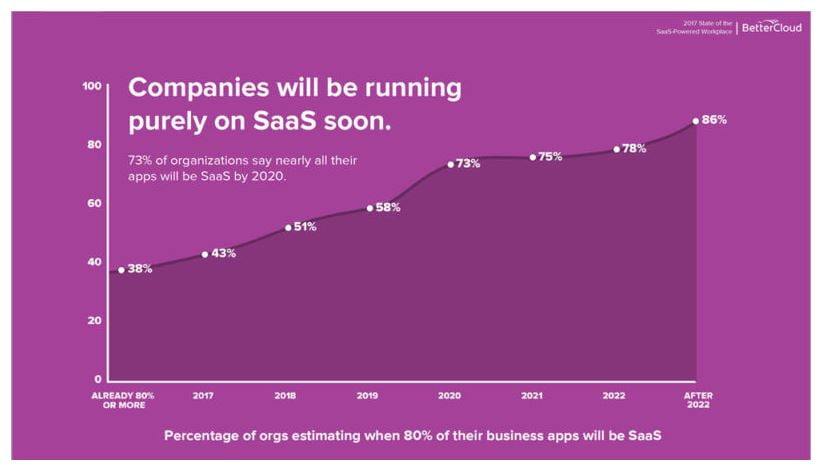
That means there are more opportunities than ever to acquire customers as a tech business.
Nonetheless, sales won’t be falling in your lap.
But, SaaS companies will be sitting on a pot of gold if they get this one thing right: copywriting.
This is because writing excellent copy for SaaS products increases conversions and engagement.
It’s too easy to write about features, your company’s history, and next you know customers are snoring.
Do you suffer from boring SaaS copy? Don’t worry. I’m going to help you out.
Keep reading to learn ten powerful SaaS copywriting tips that can be applied today to improve your content.
1. Calls to action are key
The subtle strategies are often the most effective. One of which is the call to action or CTA for short.
Calls to action are phrases and words that tell users to–as you could guess–take a specific action.
It most importantly removes thinking from the equation. If they’re already emotionally invested in what you sell, it makes it much easier to push them over the finish line.
This is because they don’t have to ponder what step they need to take next.
Steve Krug, author of the famous web design book Don’t Make Me Think: A Common Sense Approach to Website Usability, said:
“Your objective should always be to eliminate instructions entirely by making everything self-explanatory, or as close to it as possible. When instructions are absolutely necessary, cut them back to a bare minimum.”
Always keep that in mind. The entire goal of any sales funnel, website, and the copy that goes along with it is to make it as easy as possible for the customer.
If they have to pull out a dictionary, ask their mom a question, or scratch their head, you’re increasing the chance they go elsewhere.
Look how Salesforce has calls to action placed all over their homepage:
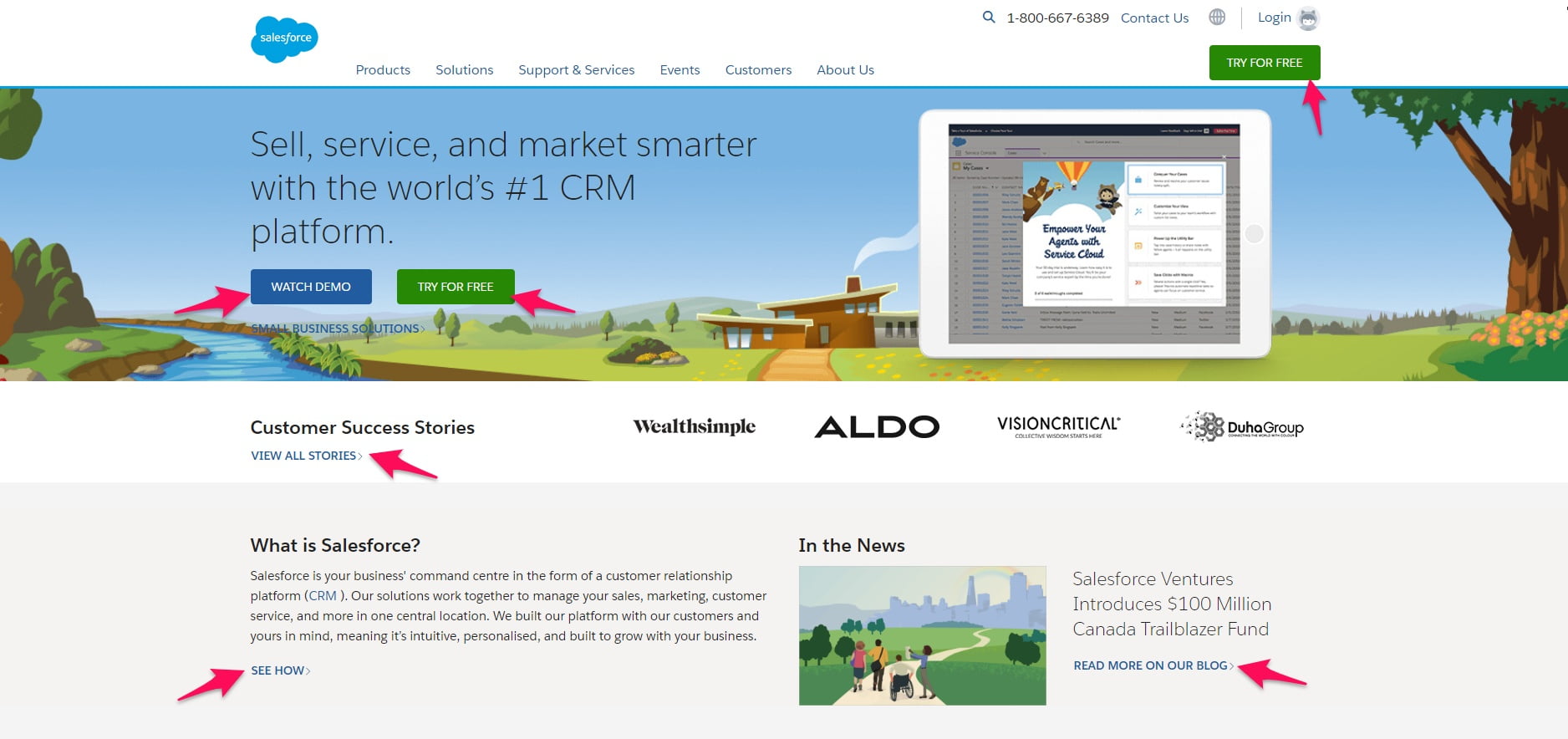
From trying a demo to reading their blog, you’re bound to take some form of action depending on your interest level.
Here are some calls to action to use yourself:
- Get a demo
- Try a demo
- Get your demo
- Watch demo
- Contact us
- Schedule a consultation
- Schedule a call
- Let’s talk
- Try for free
- Register for free
- Sign up free
- Buy now
- Buy today
- Purchase now
- Learn more
- See features
- See how
- Read more
Read my guide on calls to action to learn more or watch this full SaaS copywriting breakdown.
2. What’s the benefit of your product?
If I were to ask you what your product does, what first comes to mind?
I bet it’s a list of features the SaaS application is capable of doing. That’s great and all, but it’s not entirely why customers are buying from you.
In fact, it might be the farthest thing from it.
Let me explain.
In copywriting, there’s the principle of features versus benefits.
Features are factual pieces of information. The amount of users per account, pricing, integrations, etc.
They need to be known, but they’re not very sexy.
Benefits, on the other hand, are emotions and experiences the customer will gain from using your product.
Let’s look at Shopify, for instance. Navigating to one of their features page, we’re greeted with this hero image and headline:
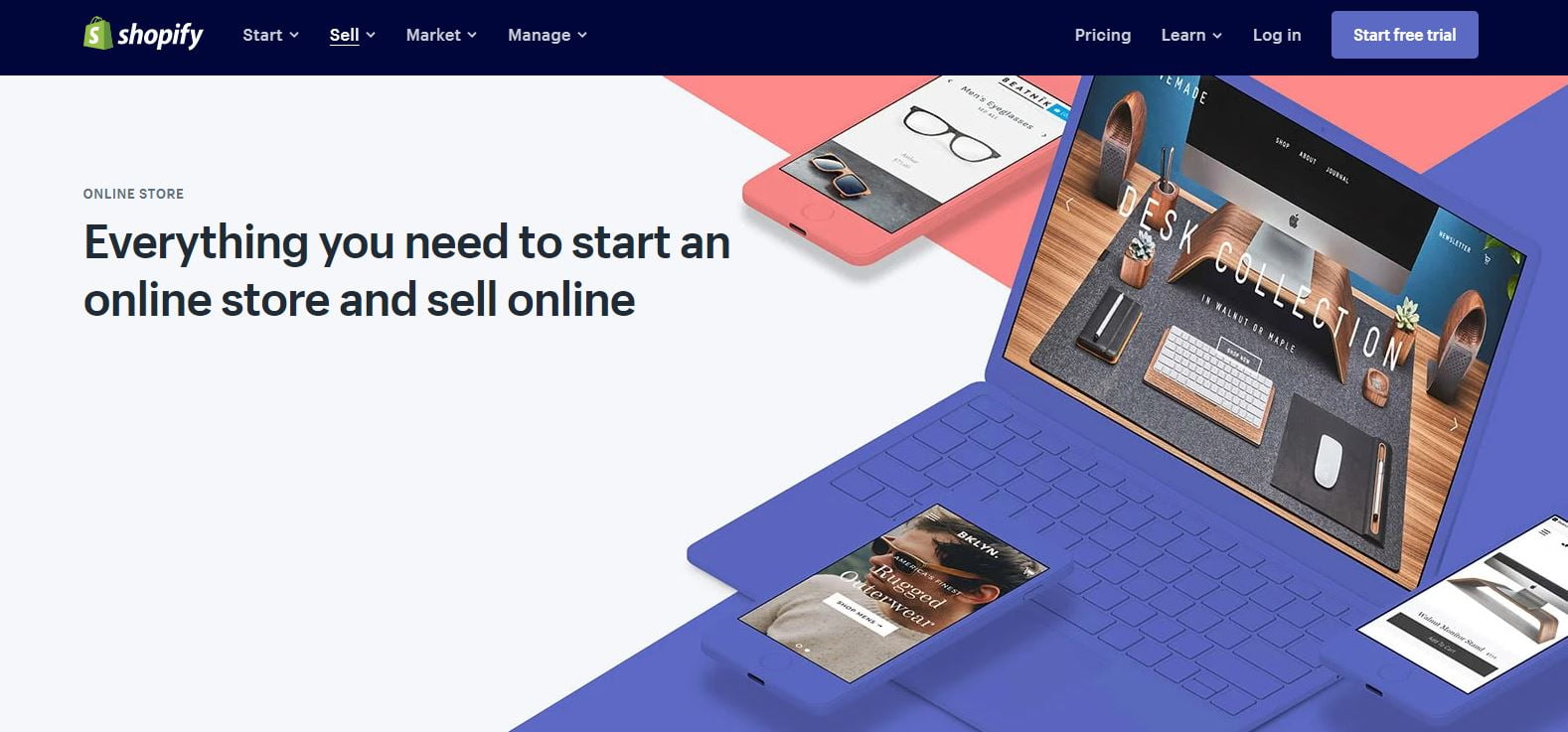
“Everything you need to start an online store and sell online” is straightforward and benefit-oriented.
Below this, they explain further that selling online with an e-commerce store is fast, easy, and scalable; users will also impress customers with beautiful designs.

And, what are all of those things? Benefits!
Below that, we have the money shot:
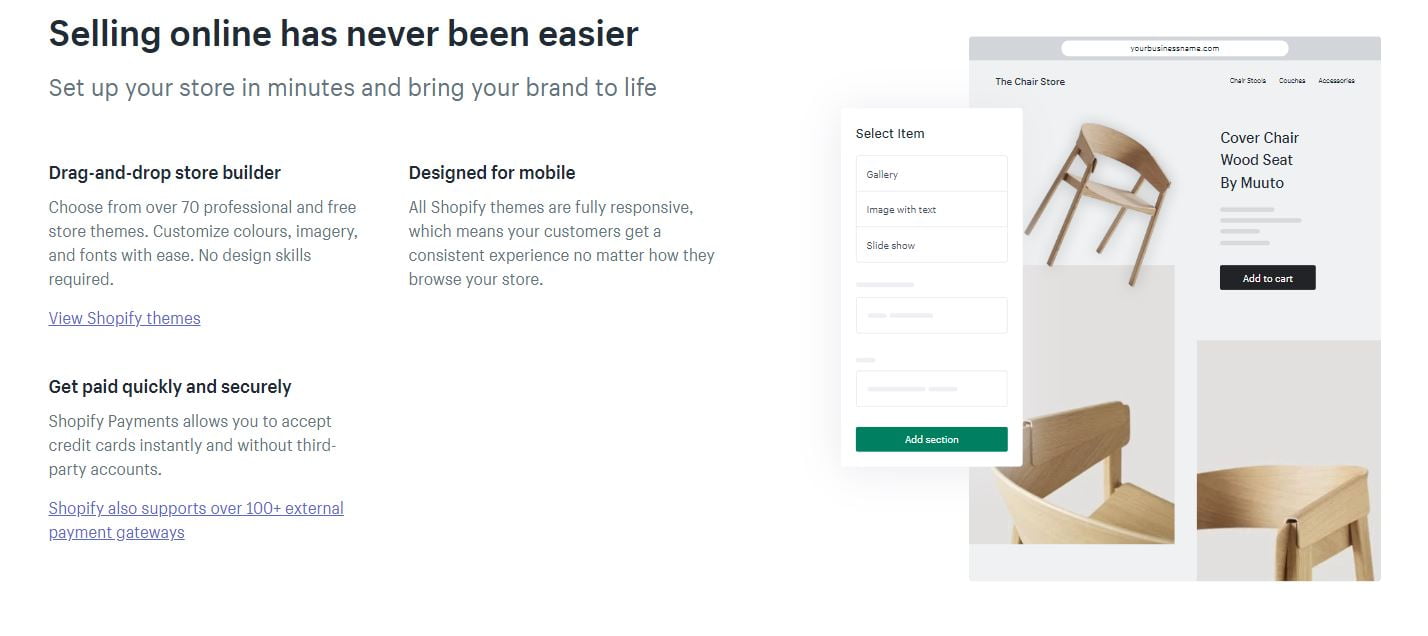
Customers want to set up an online store, right? That’s why Shopify used exciting copy that touches on what customers really want.
It begins with “Set up your store in minutes and bring your brand to life” which implies they can launch their business quickly. (A benefit.)
The drag-and-drop builder section explains no design skills are required and there are over 70 professional themes to customize. They didn’t just say “We have a drag-and-drop builder” but rather elaborated on what that means for the customer.
Shopify then speaks about how their stores are mobile optimized, giving customers a streamlined experience.
Finally, users can accept payments quickly, securely, and without setting up third-party accounts.
Next time you’re writing SaaS copy, always ask yourself “What’s the real benefit of this?” when explaining product features and your writing will be more exciting than 99% of what’s on the internet.
That brings me to my next point.
3. Paint a picture in the customer’s mind
Imagination is a helluva drug. It’s emotion mixed with inspiration, and can help customers see themselves using your application.
This stems from my previous point about understanding the benefits of your product first.
The team management software Monday is an excellent example of how to help readers use their imagination.
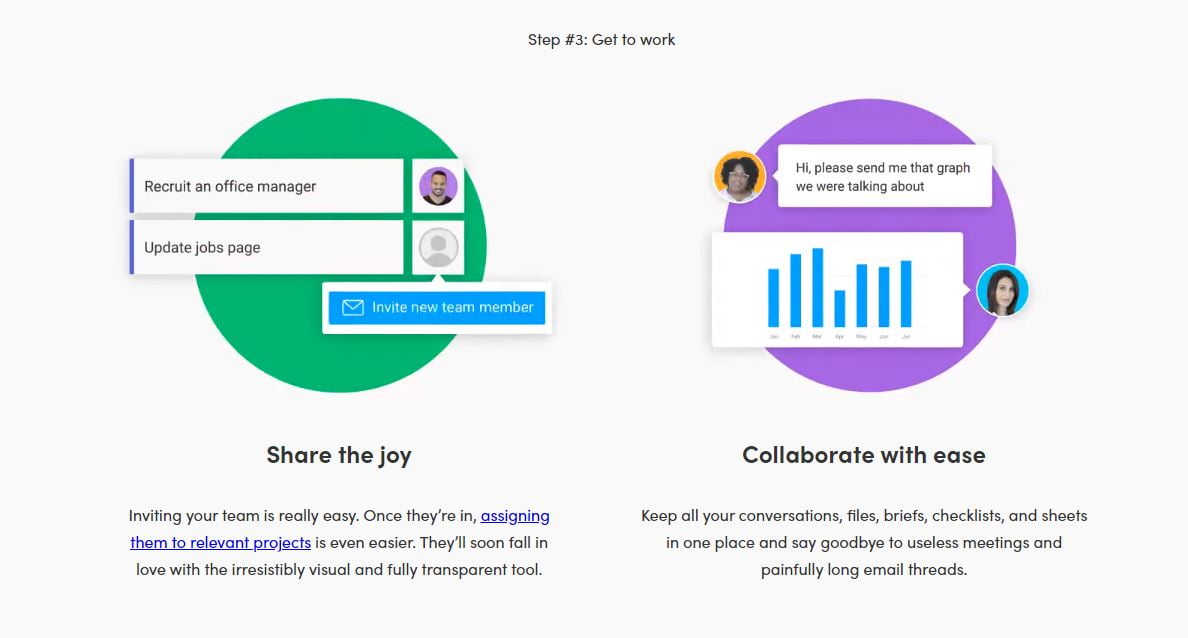
On their product page, the company speaks about how inviting team members is easy and they will be thrilled to have found such a great app.
“Say goodbye to useless meetings and painfully long email threads” is something most people can relate to.
You know, those meetings that are 30 minutes but could be three; those email threads that could’ve been summed up in a single message.
Their ideal customer will read that and imagine the last time they experienced those situations themselves, making them more interested in what Monday has as a solution.
And, do you know why imagination works so well? Because it’s emotional.
No matter what someone is purchasing, there will be a degree of emotion involved in making a decision.
A study by Harvard Business Review concluded that these are the top ten emotional motivating factors for buying something:
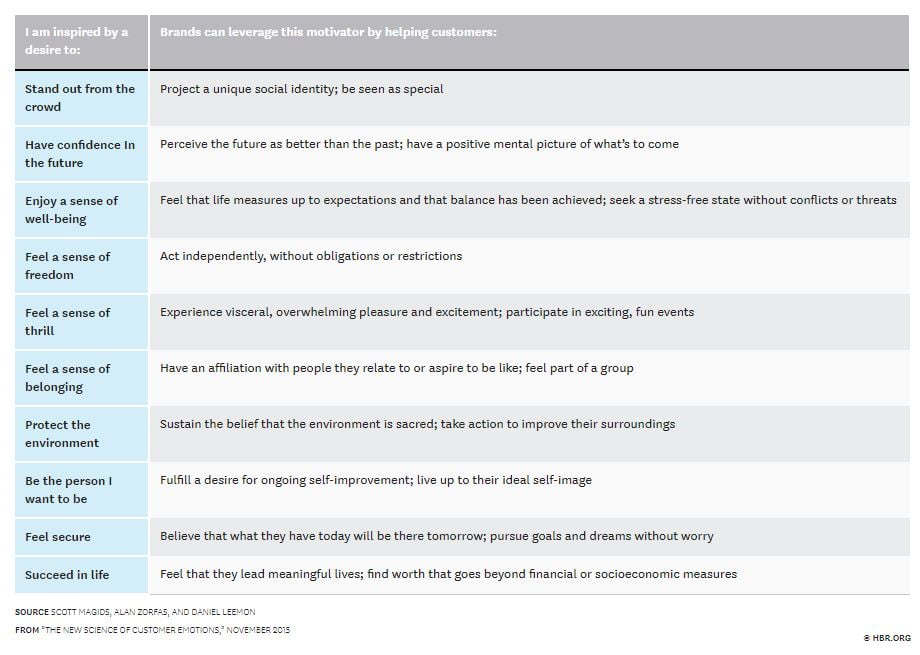
Try mixing these into the copy you write to evoke inspiration and deeper emotions before why a customer is buying from you.
Furthermore, help the customer understand what it would be like to use your product by describing it through their eyes.
What feelings does it give? How does it navigate? How will it change their day-to-day life?
4. Talk numbers, baby
Vague copy never works.
That’s like seeing a landing page for a SaaS product that says “Our platform makes money and increases conversions.”
That sucks. Customers would be jumping from their seats if it read “Our platform has helped customers increase revenue by $500k and conversions by 17%.”
The difference? One is vague and the other is specific with numbers.
That brings me to my fourth SaaS copywriting tip of using numbers as much as possible to describe outcomes, performance, and similar metrics.
Look at this case study for one of HubSpot’s customers:
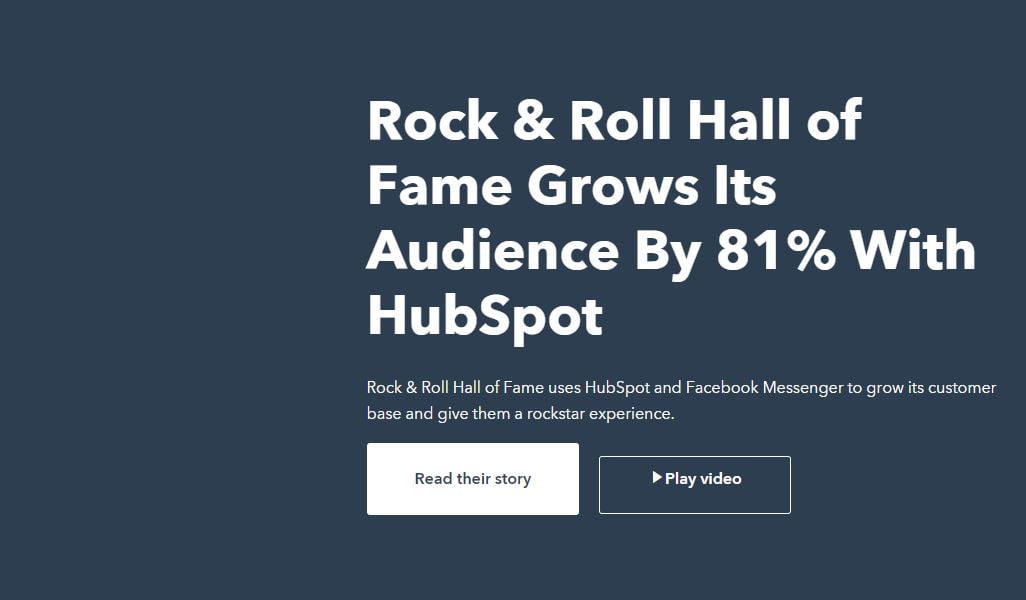
Using an exact percentage in the headline makes the title much more interesting and powerful. Readers will wonder how it was achieved, potentially increasing the click-through rate.
At the bottom of the case study itself, there are links to other success stories that state numbers, as well.
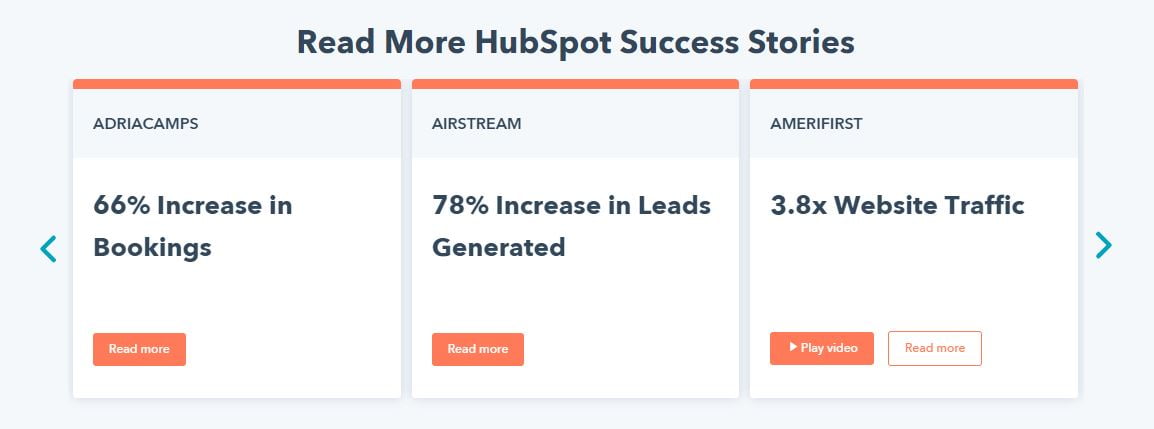
If there’s one thing you can learn from HubSpot, it’s to always use numbers wherever possible.
Writing a case study? State numbers.
Claiming growth from one of your features? State numbers.
You get the point.
5.Use emotional power words
A single word has the power to change our emotions, thoughts, and actions.
In fact, in the book Words Can Change Your Brain, Andrew Newberg M.D. commented “a single word has the power to influence the expression of genes that regulate physical and emotional stress.”
That’s why I recommend leveraging power words in your SaaS sales copy.
These are terms that have a deeper meaning and impact.
The password manager software LastPass is a good example. They sprinkle power words throughout their homepage copy like “Simplify” in the headline here:
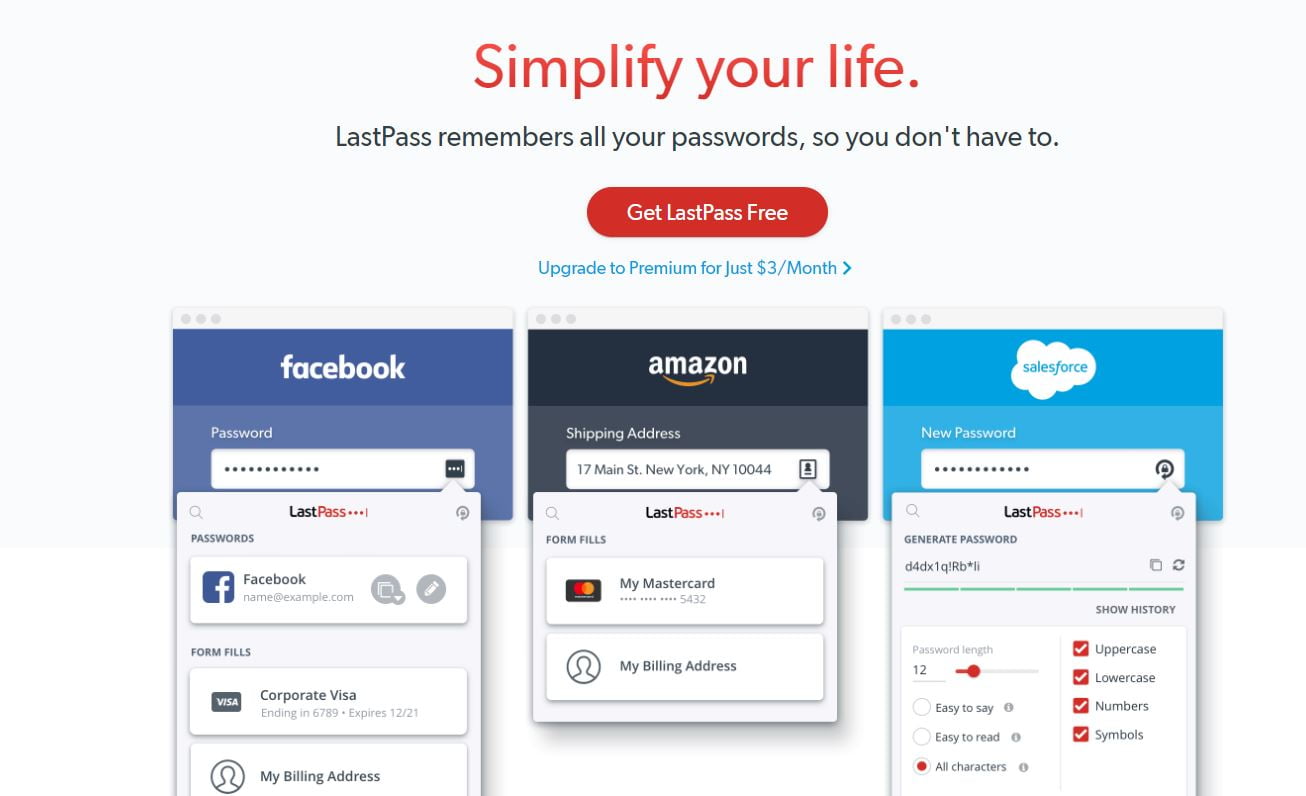
And, what comes to mind when you hear “simplify?”
Perhaps relaxation, peace of mind, and improved workflow.
Below this, they use the power words “best” and “emergency” to describe customers getting a top-tier product that can prevent disasters.
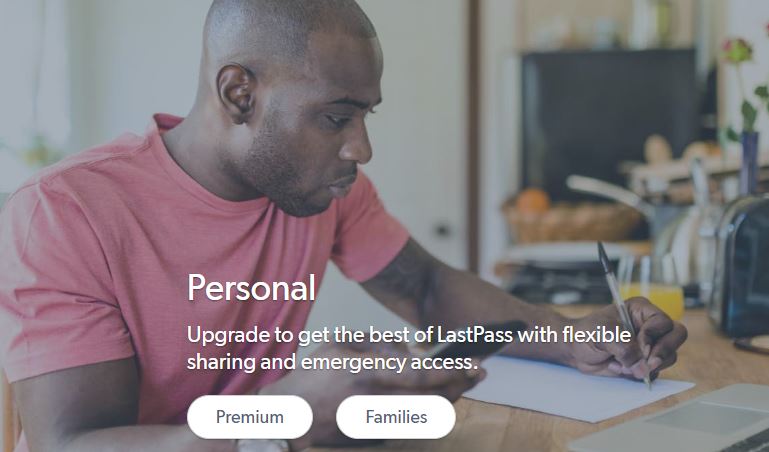
Remember that words can either elicit a positive or negative emotion so treat them like a loaded gun. What kind of experience or impression are you trying to give customers?
In the case of LastPass, they strike a balance claiming users will feel safe and not have to worry about storing passwords. That’s positive.
They also write about how unsecured passwords can make you likely to get hacked or experience a security crisis. That’s negative.
Jumping between the two keeps the reader’s attention all the way to a call to action.
6. Use a consistent voice and tone
If a customer were to visit your website, Twitter account, and Facebook page, would it sound like different people wrote the copy for each channel?
It’s a common mistake.
Unfortunately, it can confuse customers and waters down the branding. This is because a good brand is consistent. And boy do our brains love consistency.
Irregularities are like a warning sign to our reptile brain. Is something wrong? It seems fishy.
Our brain is capable of picking up on these small differences and it sends a warning signal that there may be danger.
In reality, you’re browsing the internet and the worst thing that can happen is you click a Tai Lopez ad, but keep with me.
Neil Patel is a prime example. Here’s what his blog copy looks like:
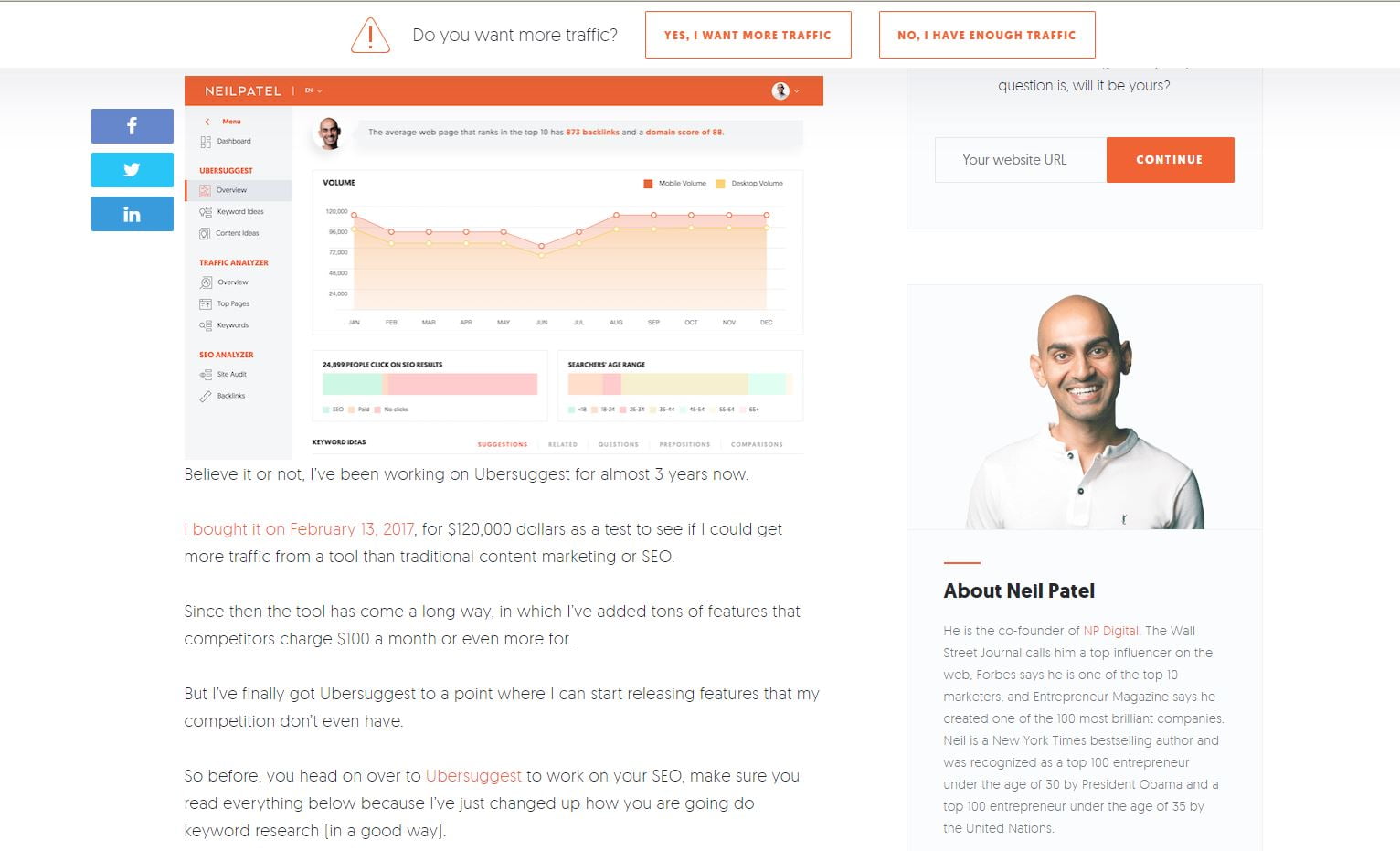
It’s casual, friendly, and first-person.
Moving over to his Twitter, we see the same style of writing.
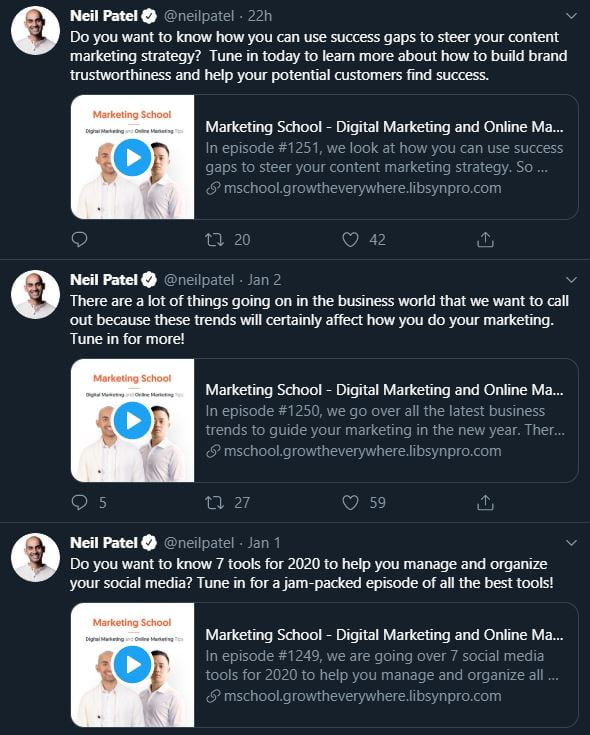
Finally, his Facebook posts keep the voice consistent across all channels.
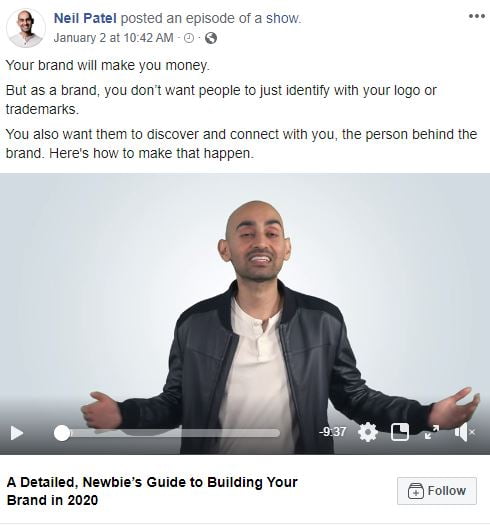
Ensure that when you’re writing copy for your website, landing pages, and other assets the voice is the same.
However, the tone can change. Think of voice as your brand’s personality while tone is how an individual message is said.
You wouldn’t write a blog post how you’d write a user guide, for example. The first could be much more casual while the second would need a more semi-serious tone to guide users through instructions.
Read my article on tone of voice copywriting to learn more.
7. Get the customer saying “Yes” with questions
Joseph Sugarman is one of the world’s best copywriters. He also pioneered a strategy known as the “slippery slope.”
This is the idea that you take advantage of sentence structure and formatting to keep readers on the page for as long as possible.
One component of the slippery slope is asking questions.
This engages the reader directly and feels like you’re asking them a question personally.
Furthermore, it gets them to say “yes” which increases their chance to say yes to a call to action later.
Ask questions related to your customer’s experience and pain points throughout your website, such as:
- Do you want X result?
- Are you experiencing X problem?
- Does X symptom sound familiar?
This also assures them they’ve found the right business to work with since you understand their situation.
Chargify, the payment processing SaaS business, asks a question above the fold of their homepage.
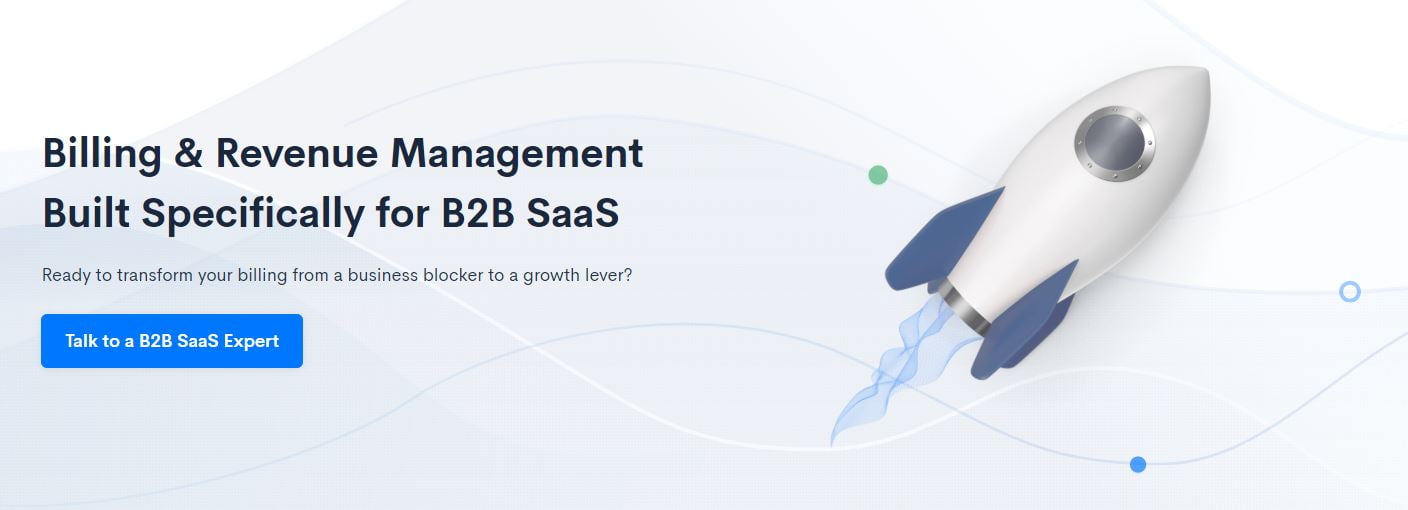
“Ready to transform your billing from a business blocker to a growth lever” is the perfect question.
This is because payment gateways can be a big sticking point for companies.
Chargebacks, fees bigger than Godzilla, and other issues are very common.
A business ready to use a new billing method will scream “Yes” after reading that question and click the big blue CTA.
8. Keep the “F” pattern in mind
Design and copy go hand-in-hand. They’re like peanut butter and jelly.
Studies have also found that our eyes tend to move in the exact same pattern on web pages which takes the shape of the letter “F.”
Think about it like this:
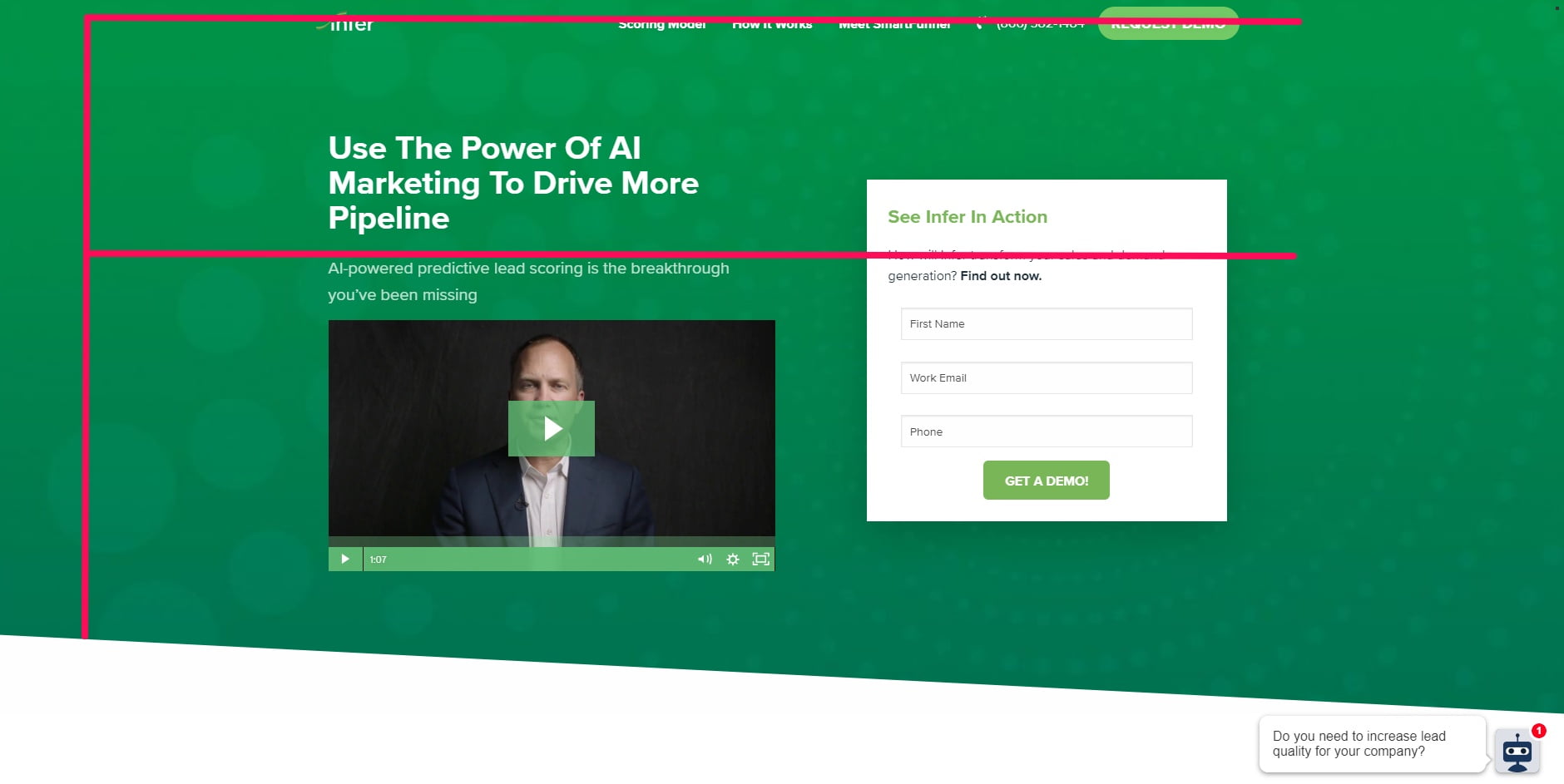
A user will normally look at the logo on the top left and over to the navigation on the right.
Their eyes then move down and over to the right where calls to action and important text usually are placed.
SaaS companies can take advantage of this by putting the most important copy and CTA on the second horizontal line as seen above.
This will maximize the amount of users who contact you, sign up for a demo, etc.
9. Survey customers for further insight
Writing effective copy stems from knowing your customers like a best friend.
This helps you craft pages that align with your goals, feelings, values, and fears.
One of the best ways to get this information is to simply ask.
You’d be surprised how many customers will gladly give you feedback after a good experience.
Use a free tool like Cognito Forms to create surveys for customers. Here’s how:
Step 1: Create a form
Click the “Begin Building Now” button on the homepage.
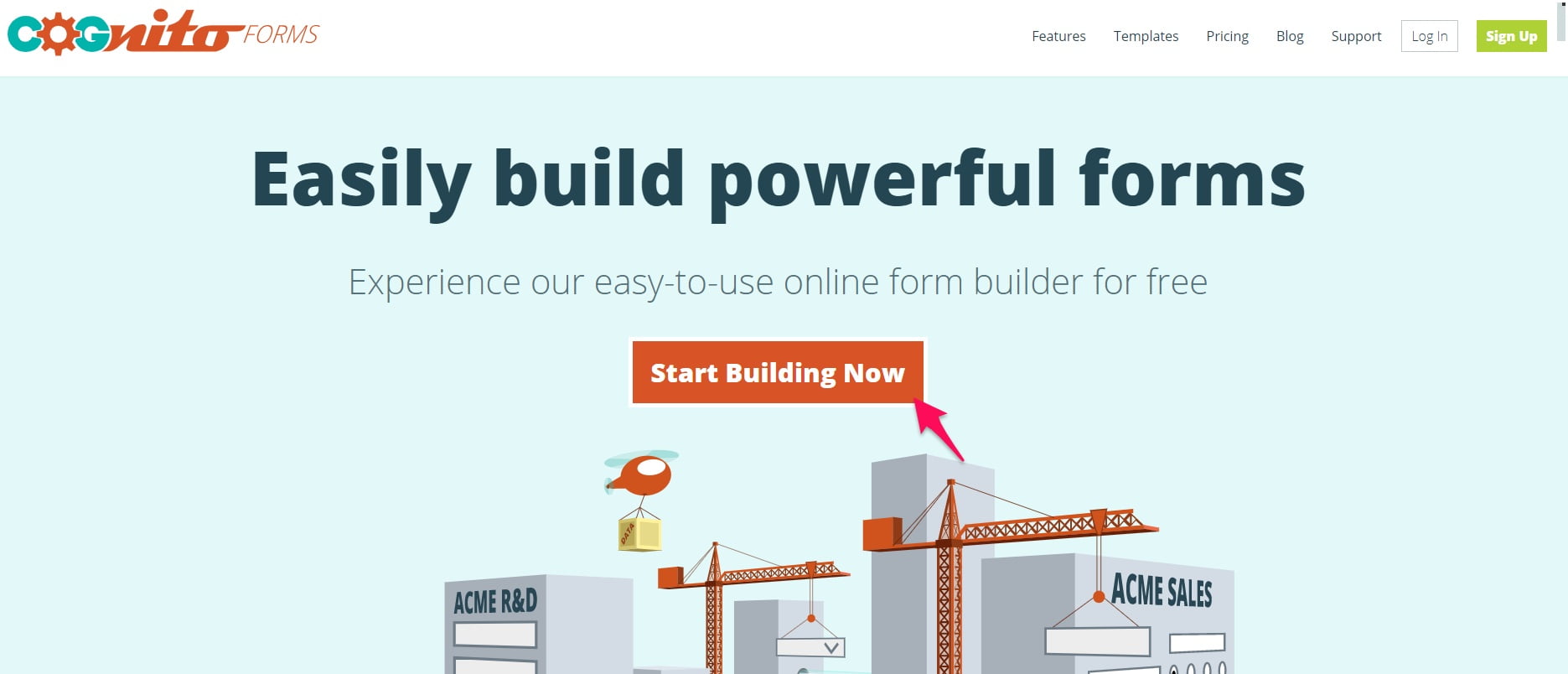
This will send you directly to their form builder where you can create a form before registering.
Clicking a box with a plus symbol will allow you to add elements like questions, checkboxes, and more from the left sidebar.
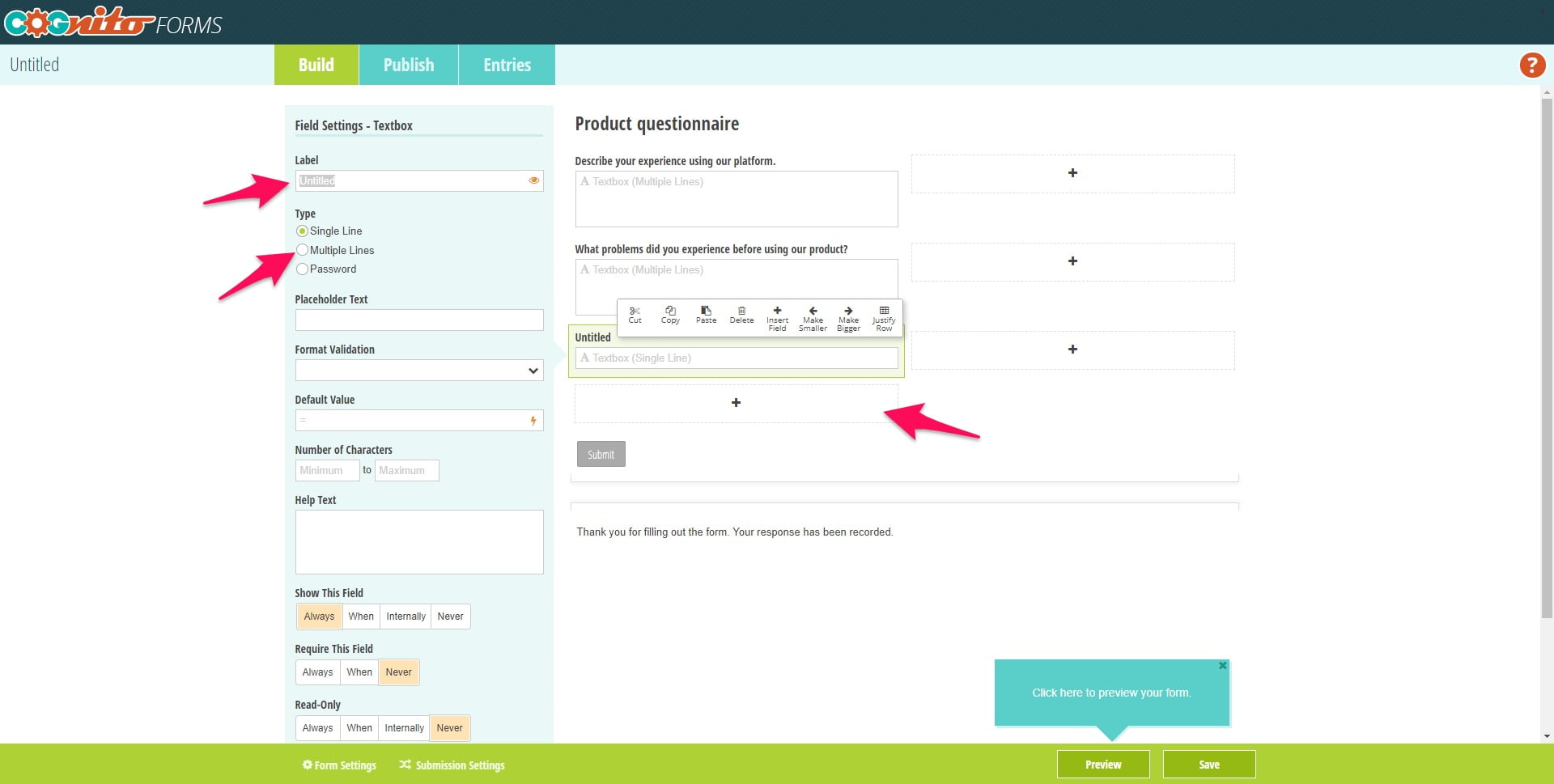
The title of each element and their individual settings can be tweaked from the sidebar, as well.
Step 2: Sign up for an account
Click the “Publish” button once you’re satisfied with the form. This will prompt you to register.
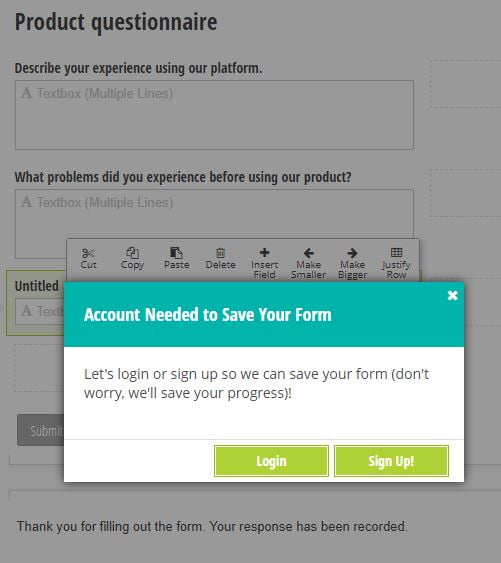
Fill out the form on the next page and you will be forwarded to the Cognito Forms dashboard.
Step 3: Send it to customers
Click the form you created from the “All Forms” list. Then, choose between the sharing options.
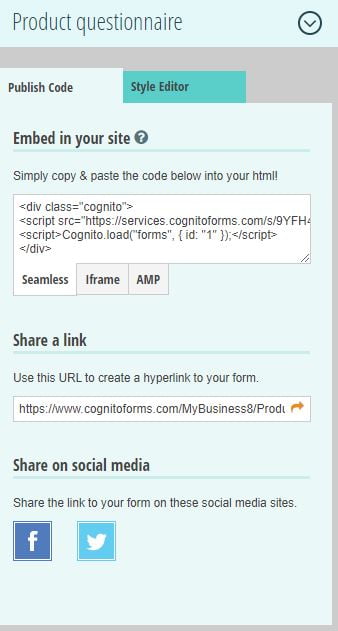
Forms can be shared with embed, link, or social media.
Use the feedback you collect to improve current and future copy.
10. Don’t be afraid to name-drop and brag
Social proof is big. So, don’t be afraid to brag.
Have you worked with Fortune 500 clients? Show me.
Did you volunteer and make a difference? Show me.
Did your app help a business rapidly grow? Show me.
This can be as simple as showcasing the logos of large brands you’ve acquired as customers, like this:
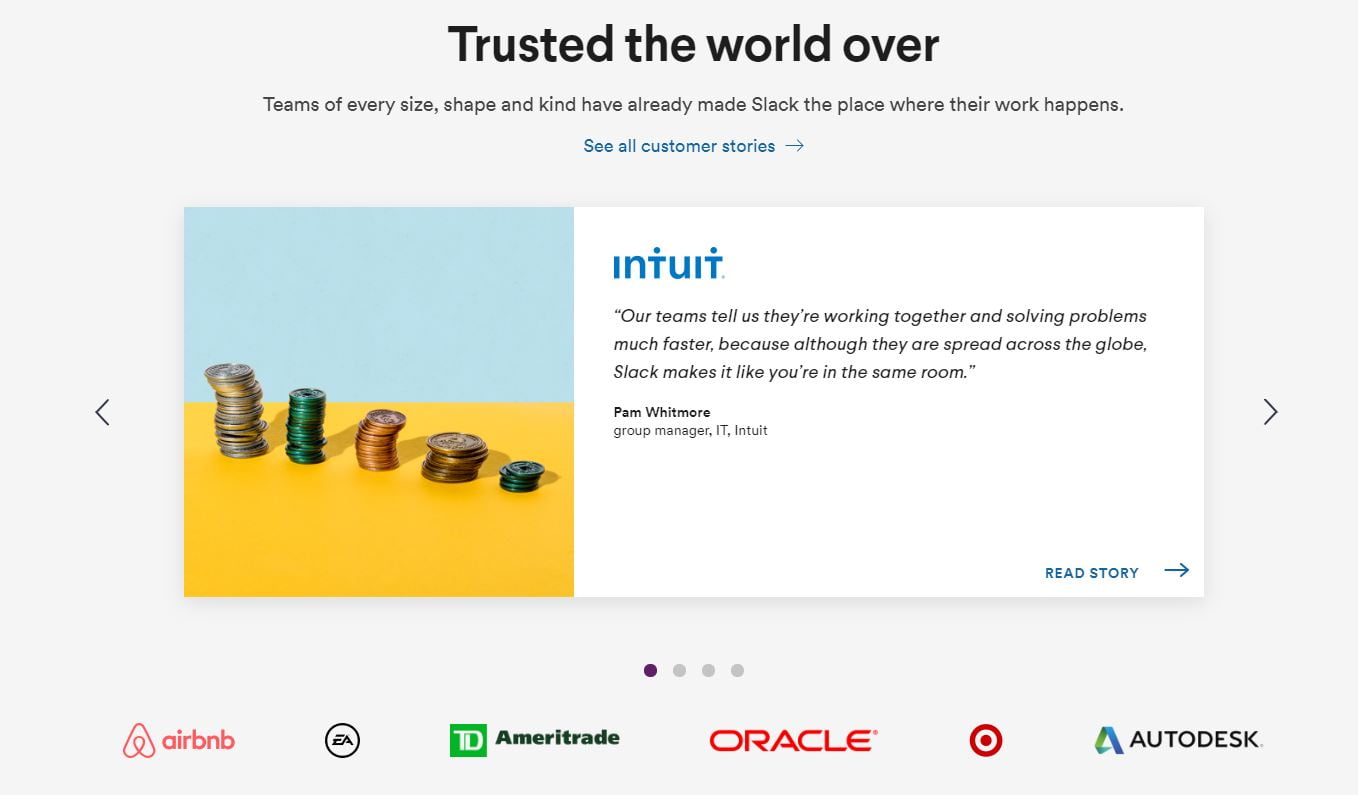
Accompanying a logo bar with the headline “Trusted the world over” implies that Slack(the company in the screenshot) is trusted by the world’s most reputable brands.
This is becoming increasingly important as 63% of consumers need to hear company claims before buying from them.
And, if companies like AirBnB and Ameritrade trust them, why wouldn’t an everyday customer?
This is called association in psychology; a behavior in which we make connections between separate things when they’re seen together.
Imagine you saw someone walking down the street with George Clooney. You’d probably think he’s a successful guy without knowing him, right?
Business works the same way.
Final thoughts on SaaS copywriting
Developing apps, rolling out features, and managing customers are a few of the zillion tasks a SaaS business handles every day.
That’s why it’s easy to forget small details like your copy.
Yet, it can make a huge impact on conversions, sales, and other KPIs.
Below you’ll find the main takeaways from the article. You should also check out my courses to learn more about copywriting and marketing.
- Include calls to action on every page to maximize the actions users take.
- Always elaborate on the benefits of products and individual features. Think about experiences and emotions.
- Help customers use their imagination and what life would look like using your product.
- Always use numbers to make copy more exciting.
- Use power words throughout the copy to improve its meaning and impact on readers.
- Keep a consistent tone of voice across all channels to enhance trust and branding.
- Ask questions customers are thinking or ones that relate to their situation.
- Place the most important words and CTAs where users’ eyes tend to go first on a web page.
- Use a tool like Cognito Forms to survey customers. This information should be used to improve sales copy afterward.
- Brag about big clients and the success your platform has brought to others as social proof.














